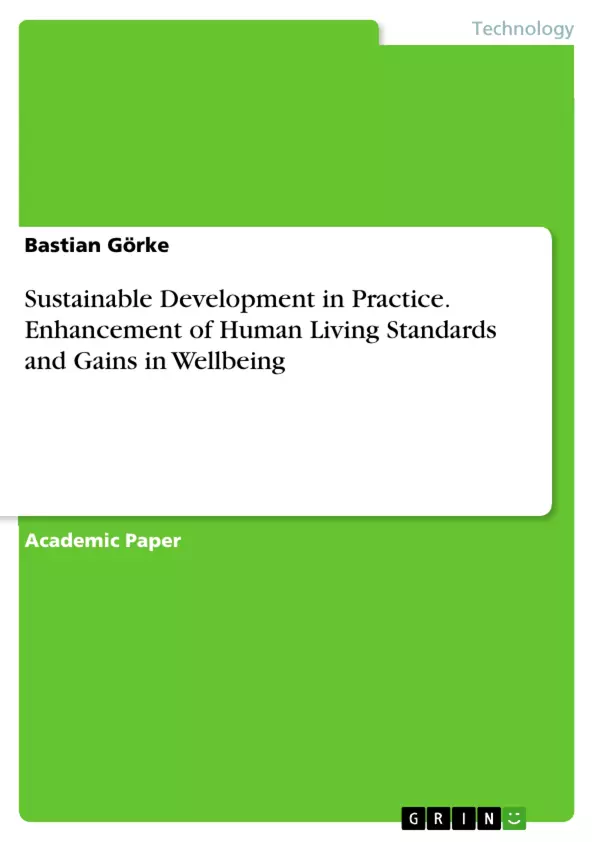The overarching goal of sustainable development always has been the enhancement of human living standards and gains in wellbeing.
Being invented by Eva Balfour and Wes Jackson, sustainable development for the first time appeared in the World Conversation Strategy published by the World Conversation Union in 1980. However, first prominence was given to this elusive term in 1987 by the document Our Common Future produced by the World Commission on Environment and Development and its chairwoman Brundtland.
With the Earth Summit in Rio de Janeiro in 1992 sustainable development finally reached the international policy agenda.
Inhaltsverzeichnis (Table of Contents)
- Sustainable Development in Practice
- Introduction
- Appraisal of the UK Strategy
- The Three Pillars of Sustainability
- One Planet Economy
- A Future Without Regrets
- From Local to Global
- Behaviour Change and Implementation
- Climate Change
- Ensuring It Happens
- Good Governance and Sound Science
- Environmental Limits and Behaviour Change
Zielsetzung und Themenschwerpunkte (Objectives and Key Themes)
This essay examines the UK's "Securing The Future: Delivering UK Sustainable Development Strategy" from 2005. The main goal is to assess how this strategy operationalizes the concept of sustainable development. The essay analyzes the strategy's approach, particularly focusing on the decoupling of economic growth from environmental degradation.
- Sustainable development in practice
- The UK's "Securing The Future" strategy
- The three pillars of sustainability: economic, environmental, and social
- Decoupling economic growth from environmental impacts
- The role of behavior change and implementation in achieving sustainable development
Zusammenfassung der Kapitel (Chapter Summaries)
- Introduction: This chapter provides an overview of the evolution of the concept of sustainable development, from its origins in the 1980s to the contemporary context.
- Appraisal of the UK Strategy: This chapter analyzes the core target of the UK strategy, which aims to enhance human well-being within environmental limits through more efficient economic growth.
- The Three Pillars of Sustainability: This section explores the three pillars of sustainability – economic, environmental, and social – as they are presented in the UK strategy. It discusses how each pillar is addressed in dedicated chapters within the strategy.
- Behaviour Change and Implementation: This chapter examines the strategy's approach to behavior change, emphasizing the importance of encouraging, enabling, and engaging people in sustainable practices.
- Climate Change: This chapter highlights the inclusion of climate change as a key aspect of the strategy and its implications for sustainable development.
- Ensuring It Happens: This chapter focuses on the importance of implementing sustainable development policies and measures, acknowledging the challenges of putting good intentions into practice.
- Good Governance and Sound Science: This chapter explores the strategy's emphasis on good governance and the responsible use of science to inform and guide sustainable development initiatives.
- Environmental Limits and Behaviour Change: This section delves into the strategy's approach to environmental limits, promoting sustainable consumption and production patterns to ensure future generations can meet their needs.
Schlüsselwörter (Keywords)
The key terms and concepts explored in this essay include sustainable development, UK strategy, economic growth, environmental limits, behavior change, implementation, good governance, sound science, and sustainable communities.
- Quote paper
- Bastian Görke (Author), 2006, Sustainable Development in Practice. Enhancement of Human Living Standards and Gains in Wellbeing, Munich, GRIN Verlag, https://www.grin.com/document/1030686



